Beauty’s billion-dollar baby: How Gen Z became the face of skincare marketing
The rise of Gen Z in skincare marketing
Before hitting the age 30, Gen Zers are taking skincare to the next level with lengthy routines and extreme spending in the pursuit of perfect, ageless skin.
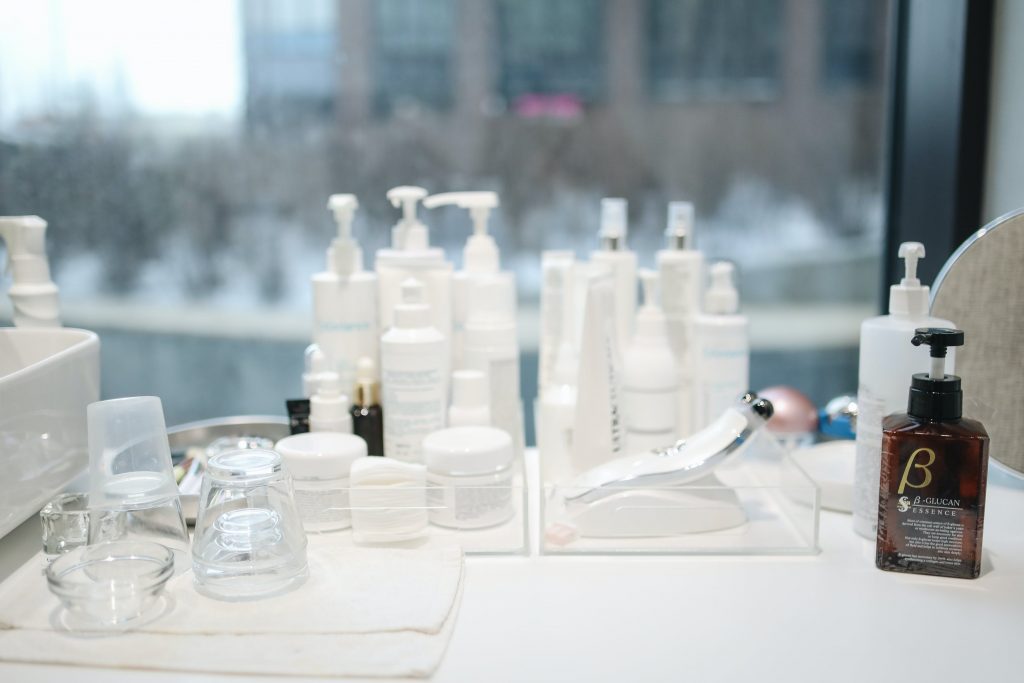
Every morning, Syracuse University student Annie Gullo washes her face with a cleanser, either one labeled “gentle” or one that contains salicylic acid to treat her acne-prone skin. Gullo pats her face dry with a paper towel — not a washcloth — to prevent bacteria build up. But it’s not time to move onward to teeth-brushing and outfit-picking; she still has to apply the assembly line of skincare products resting on her sink.
Next up is a Korean exfoliating toner with alpha hydroxy acids and beta hydroxy acid applied with a cotton pad, followed by a niacinamide and zinc serum. Then snail mucin, azelaic acid suspension, moisturizer and sunscreen.
After 30 minutes, she’s ready to start the day. Gullo’s reflection stares back at her from the bathroom mirror as she thinks; her skin still isn’t perfect. She adds a pimple patch for good measure.
Gullo estimates that she spends a couple thousand dollars a year on her skincare routines. She’s 21 years old.
While 18 to 24-year-olds like Gullo rely on skincare routines to soothe blemishes and improve skin, the prominence of self-care content online is causing Gen Zers to invest in unnecessary products.
Skincare splurge
A recent study by Statista found that over a third of Gen Z participants spend on average between $21 and $50 on a single skincare product.
The study also found that Gen Z is the top consumer of skincare products of all generations that participated, leading Millennials, Gen X and Baby Boomers. In turn, Gen Z is also the target market for skincare and cosmetic brands. The thing is, even the oldest Gen Zers haven’t yet reached 30 years old.
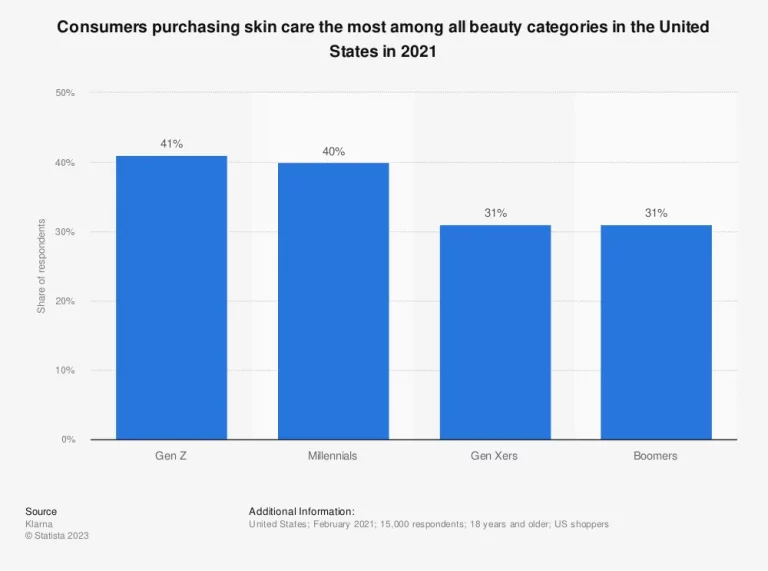
Cultural theorist and professor of fashion and beauty at Syracuse University’s London Center Emmanuelle Dirix sees this connection as no coincidence. Because of Gen Z’s constant visibility across social media platforms, a beauty standard of airbrushed models, and a parent generation obsessed with anti-aging as a result of extreme advertising in the early 2000s, Dirix says skincare marketing to Zoomers is a perfect storm.
“That’s ultimately what luxury companies do — they sell hope: This might not have worked, but maybe this will,” Dirix said. “So you go out and buy new stuff all the time. What we’re chasing is a carrot on a stick, and that carrot is societally created to make money.”
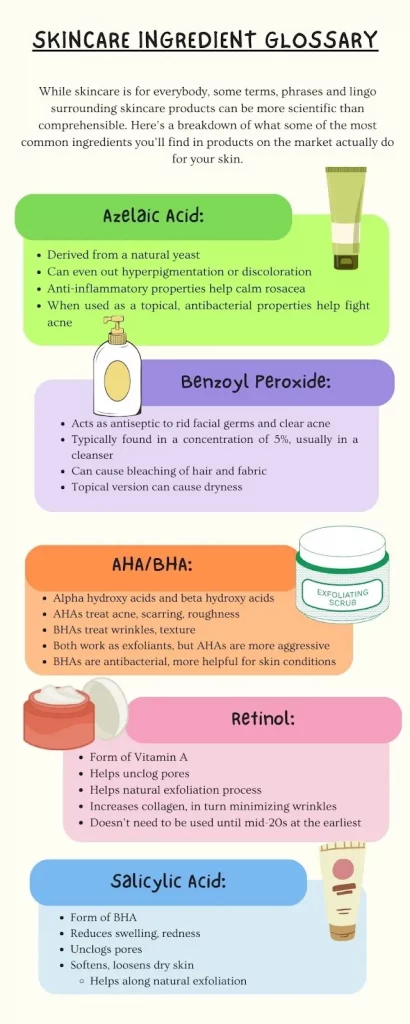
Skincare marketing has long surpassed the Olay anti-aging ads of the mid-2000s. Now, there’s a new marketing giant on the scene: TikTok.
TikTok’s influence on skincare trends
Though the app offers several rabbit holes for users to explore, the platform hosts a flood of content known as #SkinTok — an algorithm rife with skincare routines, product reviews and hauls.
This content also ushers in a new tribe of social media stars and thus, the skin-fluencer is born. Not to be confused with certified dermatologists, who have thrown their latex gloves in the ring, the skin-fluencers establish themself as experts in the field of authenticity, not medical knowledge.
20-year-old skin-fluencer Diego Caraballo, who goes by @diegomoone on TikTok, creates almost daily content, reviewing, unboxing and using various skincare products for his 33,000 followers. Although he only started to create skincare content this summer, Caraballo has quickly collected 1.4 million likes, with his most popular TikTok, reviewing The Ordinary’s pink serum, garnering two million views.
@diegomoone Have you tried this new release? 🌸 #theordinary #theordinarypinkserum #fy #fyp #foryou #korean #kbeauty #kbeautyskincare #koreanskincare #koreanskincareproducts #koreanskincareroutine #kskincare #skincare #skin #skincareroutine #products #yesstyle #glowyskin #glassskin #acne #skincaretips #skintok #microinfluencer #skinfluencer #greenscreen #viralskincare #viralkoreanskincare Mentioned: – The ordinary soothing and barrier support serum
When living in the Dominican Republic for the first 17 years of his life, Caraballo says his skin was perfect. But, he began struggling with acne and bumps after moving to Florida. Ultimately, it was TikTok that helped him learn what could help his skin and piqued his interest in creating his own content.
“I didn’t know where to start in skincare — I was on TikTok and TikTok kind of makes you want to use everything, so I wasn’t really sure what was for me,” Caraballo said. “I tried everything and it got worse. I just ended up trying so many things that I was like, I might as well make a TikTok about it.”
Caraballo says he often gets an influx of DMs from followers requesting product recommendations for their skin types. While many of the users he replies to say that their skin has either improved or needs more help, Carballo says he often reminds people that his judgment and advice come from experience, not a degree.
As a general rule of thumb, Caraballo makes sure to tell his followers to avoid products with a gimmick, like ones that advertise clear skin within 30 days or otherwise give a timeline on when your skin will improve.
Ashley Shapiro, a senior advertising student at SU and campus ambassador for Hero Cosmetics, also became interested in skincare from TikTok. During the pandemic, Shapiro got into building routines and trying trending products found on her TikTok FYP — or for you page — including a mini fridge for chilling skincare products. Shapiro, too, says she sees TikTok as an educational tool in expanding her knowledge.
“TikTok has a lot of reputable sources and dermatologists,” Shapiro said. “It’s a really digestible way to get information.”
Still, Dirix warns of reliance on the perceived authenticity of influencers, pointing out that Gen Z can be doubtful of established news sources because of overstimulation. In turn, Gen Zers develop more trust in influencers because they see relation to themselves in appearance and age group.
Rachel Anise, better known as @beautyprofessor on social media, has been a multi-channel beauty content creator since 2012. On top of her platform of 82,400 Instagram followers and 16,100 YouTube subscribers, Anise is also a writer and professor of communication studies.
Because the beauty expert and influencer sphere was not nearly as saturated when she began as it is now, Anise says many of her followers today have consumed her content since she started creating it, which keeps her relationship with her followers authentic.
But it’s not just authenticity that reveals Gen Z as an ideal audience for marketeers, Anise says. Rather, it’s Gen Z’s combination of consumption tactics, including how vocal they are online.
“There’s a multifaceted approach to marketing. Sometimes it’s exposure, sometimes it’s about name recognition or brand recognition, sometimes it’s about conversions or purchasing,” Anise said. “You really want all three of those things, which makes Gen Z a perfect target audience for so much of the spending power that brands have.”
With the uptick in celebrity skincare brands such as SKKN by Kim Kardashian, rhode by Hailey Bieber and Cindy Crawford’s Meaningful Beauty, Anise says influencing takes a step further, but can be a polarizing brand move. Often, a celebrity’s reputation or likeability takes part in determining how successful a brand’s sales will be, Anise says.
When it comes to specifically anti-aging products, however, influence can start at home.
Though derms recommend starting to use retinol — a collagen-boosting ingredient that’s probably also littered throughout products in your mom’s medicine cabinet — starting in your mid-20s, TikTok-viral brands like Drunk Elephant are spreading retinol use to even those under age 18 with colorful packaging.
Before getting into #SkinTok, Caraballo says his mom inspired him to take care of his skin, having done skincare for as long as Caraballo can remember. At 50, Caraballo says she looks younger than her age, perhaps a result of applying sunscreen every two hours.
But starting anti-aging products young is not the golden rule to preventing wrinkles or fine lines. Instead, Anise says consumers should just look for products that are beneficial to their skin type at any age. Ultimately, she says, brands aren’t building a customer for now – they’re building a customer for a lifetime.
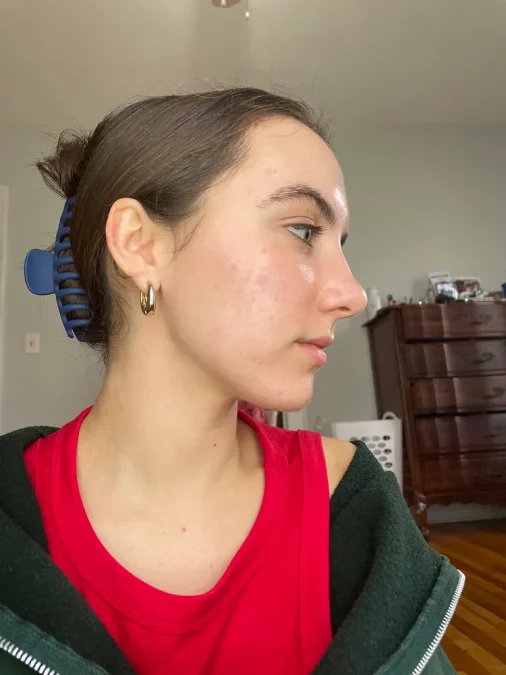
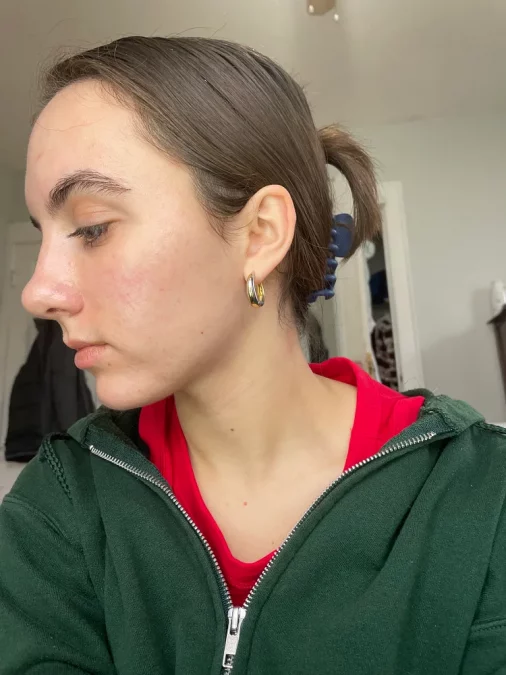
When Dirix worked for L’Oreal Luxe — the makers of high-end skincare brands like Kiehl’s, Biotherm and Lancôme — she frequently asked her coworkers for product recommendations that actually work. Their answer: get fillers or botox.
“They were like, ‘Some stuff will make the texture of your skin better. But unless you’ve got a load of money to spend, what you’re buying in the shops isn’t going to make your skin better.’ I thought that was revealing,” Dirix said.
Gullo has struggled with her skin since she was nine years old. When she was 14, her daily full face of pore-clogging foundation and concealer had finally met its time of reckoning; skincare became a necessity, which came at the expense of her ability to wear makeup.
After trying (and failing) to cure her acne woes with home remedies — everything from using toothpaste as a spot treatment to DIY honey and avocado masks — Gullo said her skincare needs are now an enjoyable ritual. Still, she said, it comes at a price even costlier than retail: obsession.
“There will be one product that goes viral on TikTok and then I’ll immediately buy it, use it for two weeks and then it sits on my counter,” Gullo said. “It’s a love-hate relationship because I love finding new products and trying new things but at the same time, there’s a limit to that.”
The U.S. cosmetics and beauty industry alone generated an estimated $18 billion in 2022, leading the global skincare market, according to Statista.
A study by Grand View Research projects that the global skincare market will grow at a compound rate of 4.7% over the next seven years, with heavy influence coming from the rise of Korean cosmetics, or K-beauty. Since K-beauty focuses on products that nourish and hydrate the skin at a cheaper price even when purchased off of the Korean website, Caraballo predicts that American cosmetics are out-trended.
“Skincare is really serious in Korea,” Caraballo said. “They have charts, like the Billboard charts, of popularity. It’s all ranked.”
Minimalist skincare: Quality over quantity
Scaling back overconsumption is an obstacle for customers across multiple industries and mainly rests on consumer self-control and budgeting. At the same time, a product’s expiration date may help discourage consumers’ shopping indulgence.
Dirix reminds skincare and cosmetics users to look on a product’s backside for a small symbol resembling a pot with an open lid. The symbol identifies how many months after opening the product it can be used. Often, products max out at a year.
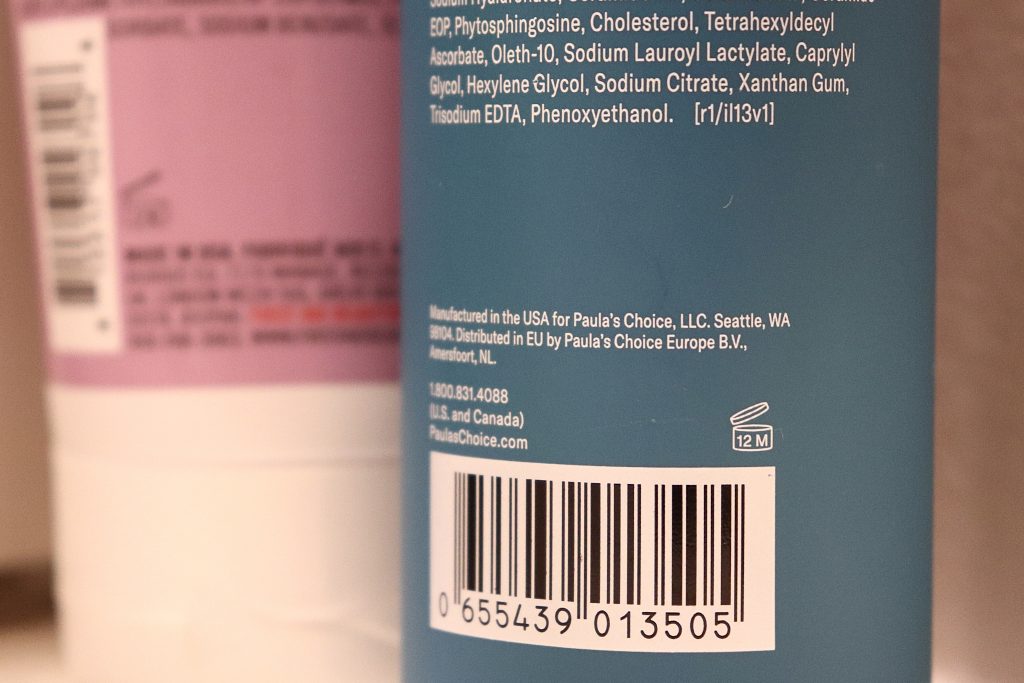
Caraballo agrees the urge to build an intense skincare routine can cause people to overconsume and overuse, which can actually make their skin worse.
This was true for last year’s #SkinTok exfoliating trend, Caraballo says, when Paula’s Choice brand of exfoliants went viral. In marketing this product for daily use, consumers were scrubbing off the skin before it was ready to shed, which can damage the skin barrier.
In an interview for the Beautiful With Brains blog, dermatologist and author of “The Skincare Hoax” Fayne L. Frey emphasized minimalistic skincare. Frey’s version of an essential routine relies on only four products: sunscreen, petroleum jelly, moisturizer and cleanser.
“People are over skincare-izing their skin,” Anise said. “Using too much can actually create clogged pores and it can sensitize. It can make your skin reactive when it wasn’t before.”
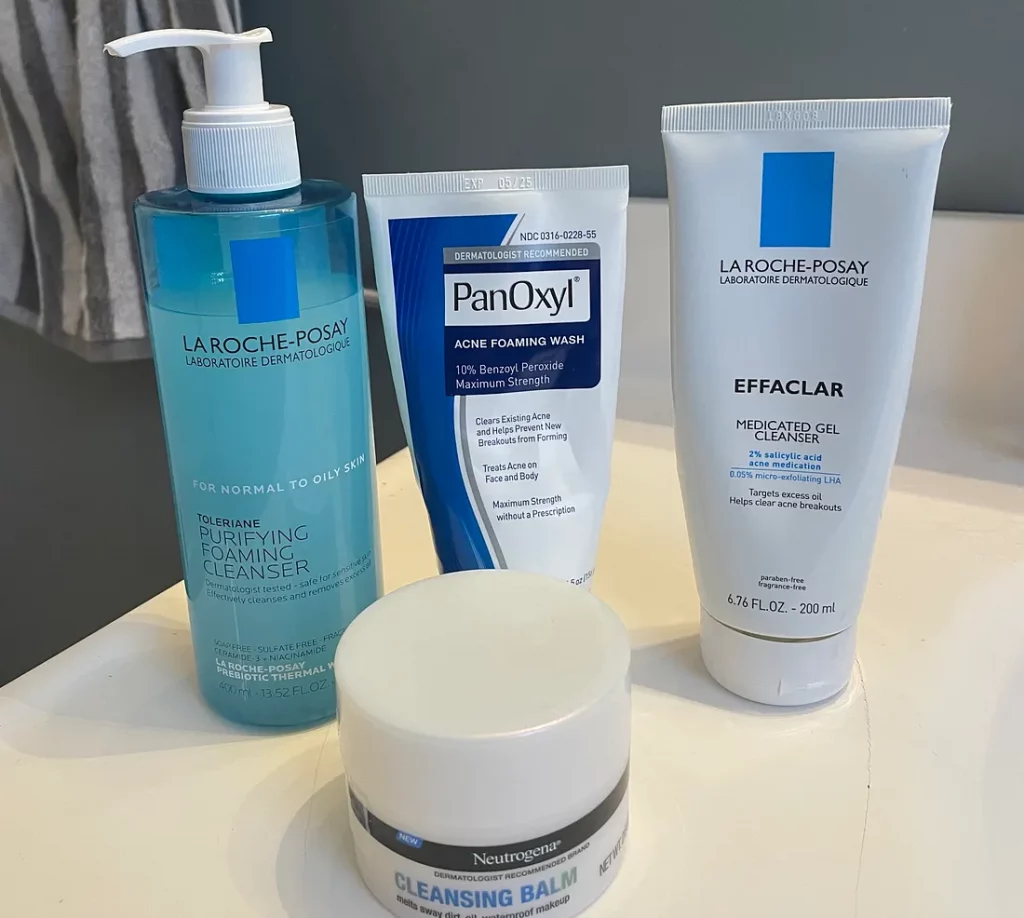
In Gullo’s case, she says she often becomes obsessed with clearing her acne and uses a cocktail of salicylic acid, benzoyl peroxide and every other active ingredient she owns. But, she says, doing so counteracts her treatment efforts. In the end, she’s left with irritated skin.
Diet, sleep and “getting in a good sweat” when exercising do all the behind-the-scenes work in maintaining healthy skin, Anise says. Skincare just fortifies those results.
Gullo agrees, leaning on lifestyle habits and over-the-counter skincare to avoid Accutane — the medical-grade acne-destroyer so extreme that it likely causes most skincare users to shudder at the name.
From night creams to double-duty makeup products, discover easy and cost-effective ways to pamper your skin with four no-BS skincare tips.
Before bed, Gullo starts the first of four cleanses with micellar water to remove her makeup, followed by an oil cleansing balm, a water-based cleanser and a second cleanser, containing either salicylic acid or benzoyl peroxide. Next, she uses toner, serum, snail mucin, a nighttime moisturizer and spot treatment.
She lays down on a fresh pillowcase, which she makes sure to change every day — no bacteria build up here. Finally, it’s time to work on her beauty sleep.
